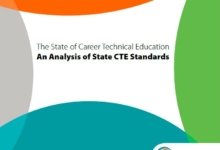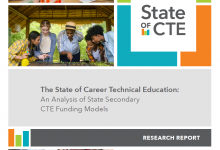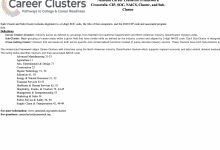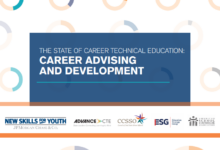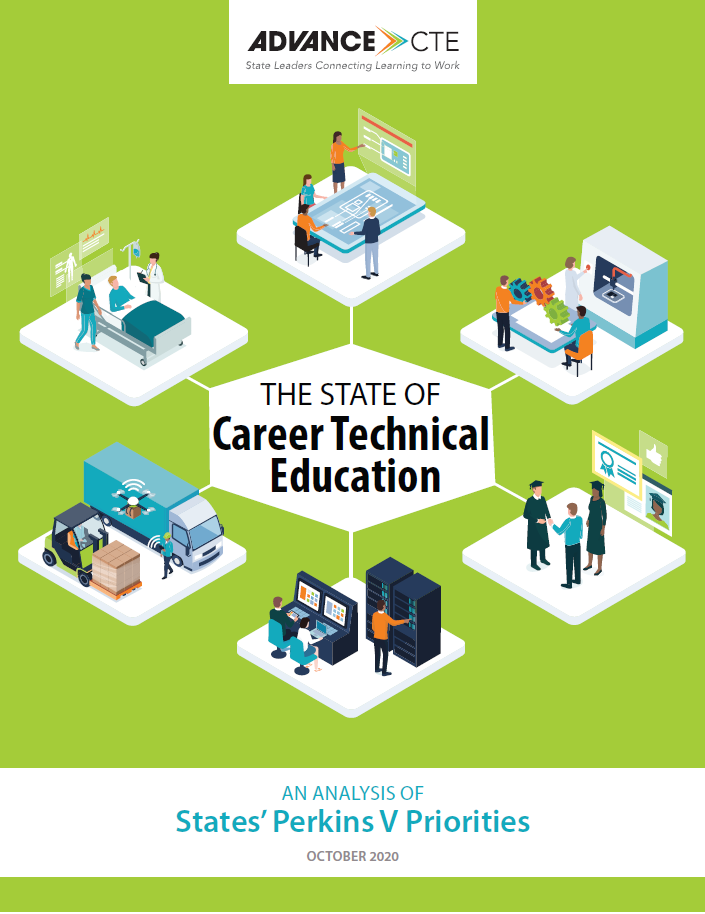In summer 2018, the Strengthening Career and Technical Education for the 21st Century Act (Perkins V) was signed into law, which provided states the opportunity to reflect, engage with a wide array of stakeholders and partners, reaffirm key priorities and commitments, and identify new opportunities to support learners and their industry partners. The State of Career Technical Education: An Analysis of States’ Perkins V Priorities examines how states have leveraged the development of Perkins V state plans to advance the dual priorities of expanding quality and increasing equity within their CTE systems.
Through the analysis of all 50 states and Washington D.C.’s Perkins V plans, which was supplemented by a survey of State CTE Directors, Advance CTE identified common aspects that are indicative of a comprehensive and cohesive state plan, a number of which go beyond the law’s requirements and expectations. These hallmarks include:
- A shared statewide vision;
- Ongoing and meaningful alignment and collaboration across the K-12, postsecondary and workforce systems;
- A commitment to equity and learner supports;
- A commitment to quality programs;
- Systems for attracting, retaining and developing CTE instructors;
- The use of data-driven decisionmaking; and
- A strong system of supports to ensure fidelity of implementation.
These hallmarks of a strong Perkins V state plan offer insights into how states are addressing the significant changes under Perkins V while taking advantage of the opportunities and flexibilities awarded, along with specific state highlights and promising innovations.
Read the executive summary here.


